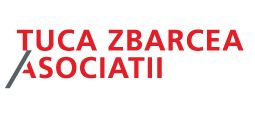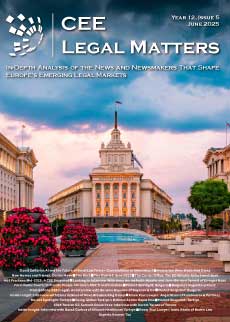(A) Foreword
The genesis of the Single Statement Form 212 was tumultuous. Its appearance was not the result of an organic, natural process of simplifying the process of determining taxes and duties, of declaring and collecting them, but rather one of compromise solutions to end the many hesitations and tax measures hard to understand even by professionals.
From the perspective of collecting all the information in a single document, it is obvious that the statement is useful. From the perspective of its complexity and the amount of information requested, the single statement can be considered as a difficult challenge for individuals who will be forced to use it for tax compliance.
But let's go through some of the details of this new, revolutionary document in the field of individual income taxation.
(B) Legal framework
The normative act that generated the necessity of introducing the single statement (the full name being the "Single Statement of Income Tax and Social Contributions due by Individuals") was Government Emergency Ordinance no. 18/2018 regarding the adoption of fiscal-budgetary measures and for the modification and supplementation of certain acts.
Emergency Ordinance 18/2018 introduced a new mechanism for declaring and paying income tax and social contributions due by individuals. Naturally, this mechanism also needed an implementation tool, and this was the single statement.
The Single Statement Form was adopted through the NAFA President's Order (888/2018).
(C) Name
Why is it called the single statement?
It is highly probable that the idea of a single statement for non-wage income individuals finds its origin in Statement 112 (Statement of Payments of Social Contributions, Income Tax of Insured Persons) used in connection with taxes and social contributions related to salary rights.
There are several similarities between the two statements (112 and 212), the most prominent feature being that both aim at grouping taxes and salary and other contributions into a single document.
Until D212 appeared, individuals who were engaging in economic activities or obtaining certain income categories used multiple tax returns to estimate or declare taxes and final contributions as follows:
- D200 on income from Romania
- D201 on income from abroad
- D220 on estimated income / income bracket
- D221 on income brackets in agriculture
- D600 on base income for social insurance contribution (CAS)
- D604 on the determination of healthcare insurance contributions (CASS) for people without income
- D605 on stopping CASS for non-income persons
Statement 212 merges all seven above-mentioned forms into one, and the information is systematized differently, in a modular fashion.
(D) Absolute novelty
The absolute novelty of the form is that the statement is used both for the estimate of income and for the statement of final income earned.
Specifically, there are two main sections:
- Section I including information on earned income (e.g. for the year 2017)
- Section II including information on estimated income to be earned (e.g. in 2018) and afferent social contributions.
(E) Who must file the single statement?
The single statement is filed by all natural persons who, individually or in a form of association, make incomes/losses from Romania and/or abroad, who owe income tax and mandatory social contributions in accordance with the provisions of the tax code.
Therefore, the statement is used both by individuals who are earning income from Romania as well as individuals who earn income from abroad or a mix of the two.
The statement is submitted both by persons who receive income for which the tax is determined in the real system as well as by persons taxed through the system of income brackets.
The single statement 212 is not to be submitted for the following income categories:
- income from wages and salaries
- income from intellectual property rights, whose taxation is final
- income from the transfer of the use of property in the form of land lease, whose taxation is final
- income from investments, whose taxation is final
- income from prizes and gambling, whose taxation is final
- income from pensions
- income from the transfer of real estate property from personal patrimony
- net income determined on the basis of the income bracket (with some exceptions)
- income from other sources (with some exceptions)
(F) Submission deadline
The general deadline for submitting the Single Statement is 15 March. Until 15 March this year, both the final earnings for the previous year and the estimated income for the following year are declared.
By exception, in 2018, the first deadline for submission is July 15, 2018 for both income from Romania and/or abroad in 2017, for the tax on estimated income /income bracket for 2018, and for the estimated income for the classification as payer of social contributions and declaring them in 2018.
In the case of starting an activity during the year the specific submission term is 30 days from the date of the event.
(G) Rectifying the statement
The statement can be rectified.
The rectifying statement is used for:
- Correction of income tax or social contributions
- Modifying identification data
- Changing data on the revenue category /source or the level of revenue
- Modifying data related to CAS or CASS estimates for 2018
- Correcting other information included in the statement
(H) Filing methodology
The current regulation provides that there are several alternate ways to file the statement:
- On paper, to the registration office or by mail with acknowledgment of receipt
- By electronic means of remote communication, either through the virtual private network service, or on the egovernment website, with qualified electronic signature
The declared intention of NAFA is that, in the near future, the single declaration be submitted exclusively by electronic means of remote communication.
The statement will include in the Annexes the necessary supporting documents.
(I) How to fill in the statement
The single statement is modular, to be filled in separately by each source and category of income.
It can be filled in directly by the taxpayer or by a tax attorney/curator. Individuals who earn income from multiple sources or income categories will fill in one section for each category and source of income.
The statement will be filled in under both sections: (i) Income earned in the previous year and (ii) Estimated earnings for the current year.
As a comprehensive statement, the filling-in instructions are very complex, including several dozen pages. In order to fill it in, at least in the initial phase it is recommended that the person be assisted by a tax consultant.
(J) Conclusions
Taking into account all these specific details, we can conclude that, in principle, the introduction of the statement is welcome, provided that the implementation and filling-in details are accurate and fully communicated to the users.
From a technical perspective, introducing such a statement, especially if there is a computer platform for remote communication, is a good thing, a step forward towards a decent interaction between the taxpayer and the financial and fiscal administration.
The existence of a complex form with much detail to be inserted can be considered a serious handicap for people less familiar with tax calculation procedures and tax returns. This aspect should be remedied by drafting a supplementary guide and organizing an outreach campaign for the form and the instructions for filling it in, by various accessible ways. The use of tax expertise is also recommended.
The dramatic change in the way of declaring and paying by switching from an anticipated quarterly pay system to a single payment system until the final statement is submitted can be a shock to taxpayers not used to "put aside" the amounts needed to pay taxes and related contributions . This could lead to delays in payment at least in the early years of implementation.
By Alexandru Tabacu, Tax Partner, Voicu & Filipescu




